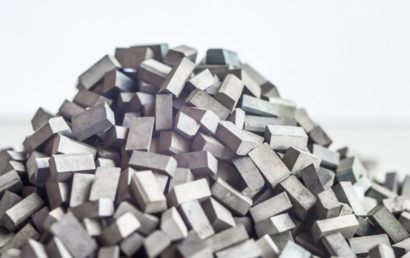Are You Planning To Coat Metal Components With Aluminum Oxide?
If, to ensure a long life, you plan to fortify metal components with an aluminum oxide finish, you can choose from a number of anodizing processes. They all are pretty standard, at first glance. They offer similar features, they all protect a substrate from the threats that are most common, and they all possess many of the same properties. But – in reality – they are not created equally, these anodizing processes! This is particularly true in the area of consistency.
Let’s take a closer look at anodizing/aluminum oxide coatings.
The Basic Properties and Attributes of Anodizing
- Standard compliance – Both environmental and industry standards must be satisfied by an anodizing process.
- Release and lubricity – The nonstick properties of a coating will improve with better lubricity. In food processing applications, this is especially important. Low coefficient of friction features should be possessed by coatings to prevent stick-slips.
- Hardness and wearability – In sliding motion and galling applications, a lot of vibration is present. To stand up to those vibrations, anodizing must resist abrasions. The hardness level achieved by coatings must compare with those of hard chrome plating or case-hardened steel.
- Resistance to corrosion – At the top of the list for reasons to use anodizing is resistance to corrosion. It is the main reason for coating with aluminum oxide, though other attributes do apply.
Quality Is Affected by Process Variability
A high-quality product must consistently be produced by whatever vendor you choose to apply your anodizing process. For this reason, it’s important to research a company before you choose one. Additionally, the coating they use matters greatly. You will be relying on the consistent quality, reproducibility, and hardness of the anodizing process.
Make sure the process uses a coating that features the following benefits:
- Non-wetting and self-lubricating surface characteristics
- High dielectric strength
- Low friction coefficient
- Thickness range between 0.0003 and 0.0004 inches
- Surface hardness between Rc 65 and Rc 40
- For a ceramic material, excellent thermal conductivity
Also essential is compliance with industry standards such as the following:
- REACH
- ISO certified
- Automotive ELV (end of vehicle life) initiatives
- AMS 2482 and AMS 2469
- FDA and USDA
- NADCAP
If you’re not sure whether the thermal spray company you’re researching is capable of providing the coatings you require, speak to someone personally before contracting their services. An entire project can be negatively affected by the wrong coating or one that is applied by anything less than a certified technician/qualified expert.
Consistent Quality In a Coating
Coatings which exhibit a quality level that is consistent are the types of coatings to seek out. Two things help to differentiate between anodizing coatings:
- The company providing the coating (they should stand behind their product)
- The coating’s properties
To assure consistency and quality, choose a thermal coating company that is reputable, established, trustworthy, and willing to work with you and your precise needs. Industries demand protection from aluminum oxide coatings – choose a company that can deliver!
At A&A Coatings, we do deliver – and we’ve been doing so for decades. One of the biggest names in the industry, we provide protective coatings for basically every industry known to mankind, in one way or another. You may not even realize the many uses of our protective coatings in your industry, even if you’ve been in business for years. Contact one of our experts today to discuss further what our protective coatings can do for your company.



